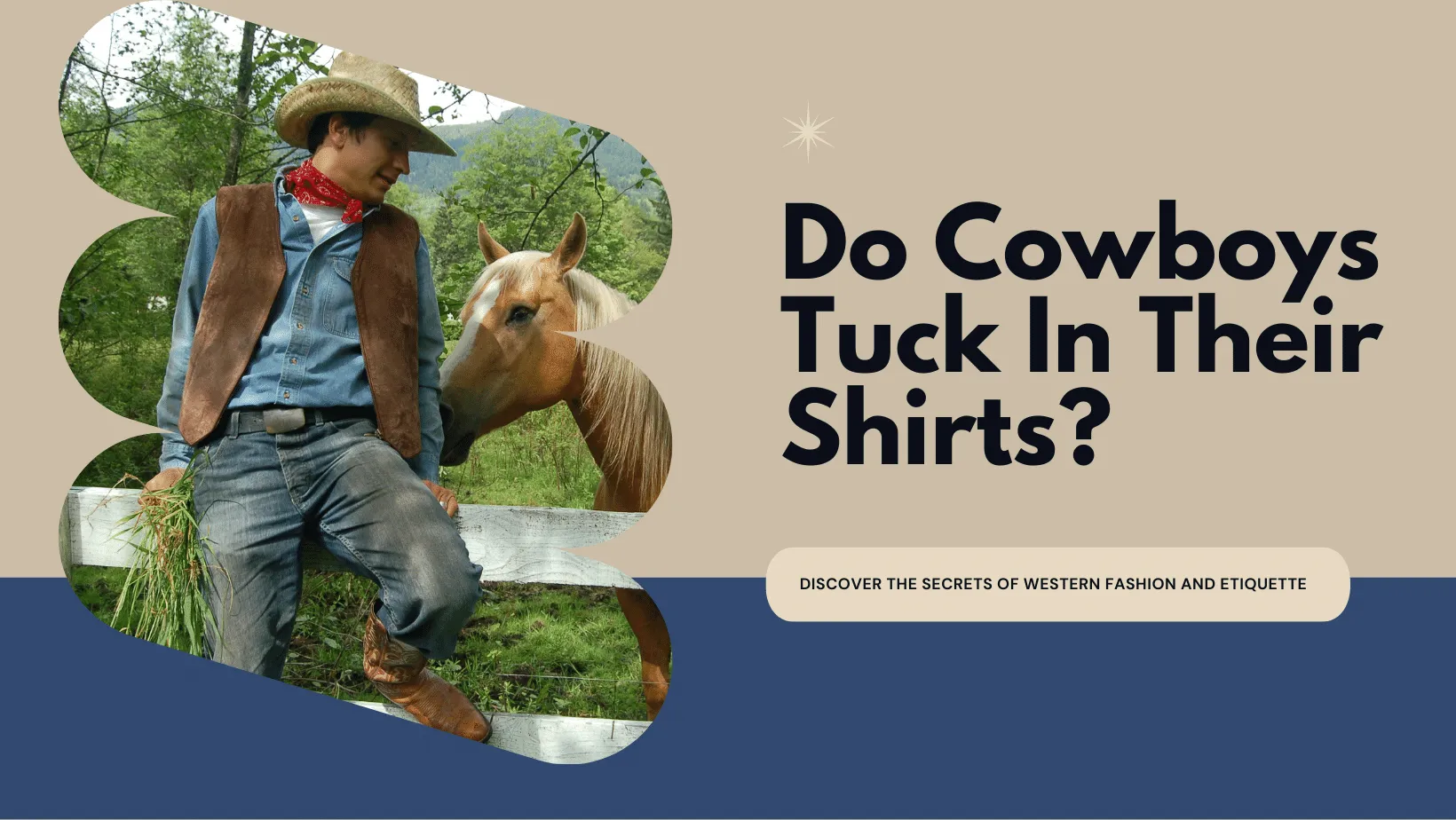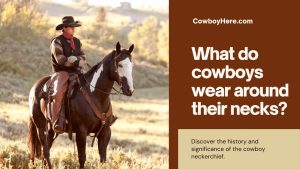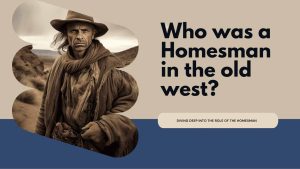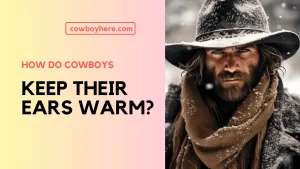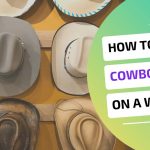When you think of a cowboy, what image forms in your mind? For many, it’s the silhouette of a rugged figure perched atop a horse against the backdrop of a setting sun.
His hat’s shadow concealed his gaze, leather boots stained with the dust of the trail, and, of course, that iconic shirt – but is it tucked in or left free?
Believe it or not, whether cowboys tuck in their shirts is more than a trivial question. It’s a symbol, a matter of practicality, and an insight into the evolution of Western fashion and culture.
Cowboys have roamed the vast plains of the Americas for centuries, becoming icons of freedom, hard work, and adventure. And with that legacy comes a fashion statement – one that’s both practical and stylistic.
How they wore their shirts wasn’t just a random choice; it told a story about their work, the climate they faced, and even their status in the community.
You might be wondering why this seemingly minor detail is worth your attention. Well, understanding these nuances gives depth to the iconic imagery of the cowboy.
It provides a glimpse into their everyday lives and challenges and underscores the fact that every detail – even something as simple as the tuck of a shirt – has its own tale to tell. So, saddle up and join us in exploring the tucked and untucked stories of the Wild West!
History of Cowboys and Their Attire:
When delving into the annals of the Old West, the image of the cowboy stands tall, steadfast against the backdrop of a wild, unpredictable frontier.
But these weren’t just characters of myth; they were real men facing real challenges, and their attire was chosen with purpose and pride.
Initially, the cowboy’s shirt was a straightforward affair, often made from whatever material was affordable and at hand. Cotton was expected, given its comfort and breathability, but durability was paramount. As such, many cowboys opted for muslin or osnaburg fabric shirts.
The choice to tuck in their shirts was more than a stylistic one. Tucking in provided protection against the harsh elements, from the abrasive dust of the trails to the unyielding sun overhead.
It also offered a neater appearance, crucial when they rolled into towns and sought to make a good impression, whether negotiating cattle prices or courting local belles. Over time, cowboy fashion has seen an evolution.
As the world around them changed, so too did their attire. From the incorporation of colorful bandanas to the rise of denim as a durable and iconic choice, cowboy fashion has shifted to reflect both the times and the individual spirit of the cowboy.
Yet, through it all, the debate over that tucked shirt remains – a small but telling detail in the rich tapestry of cowboy culture.
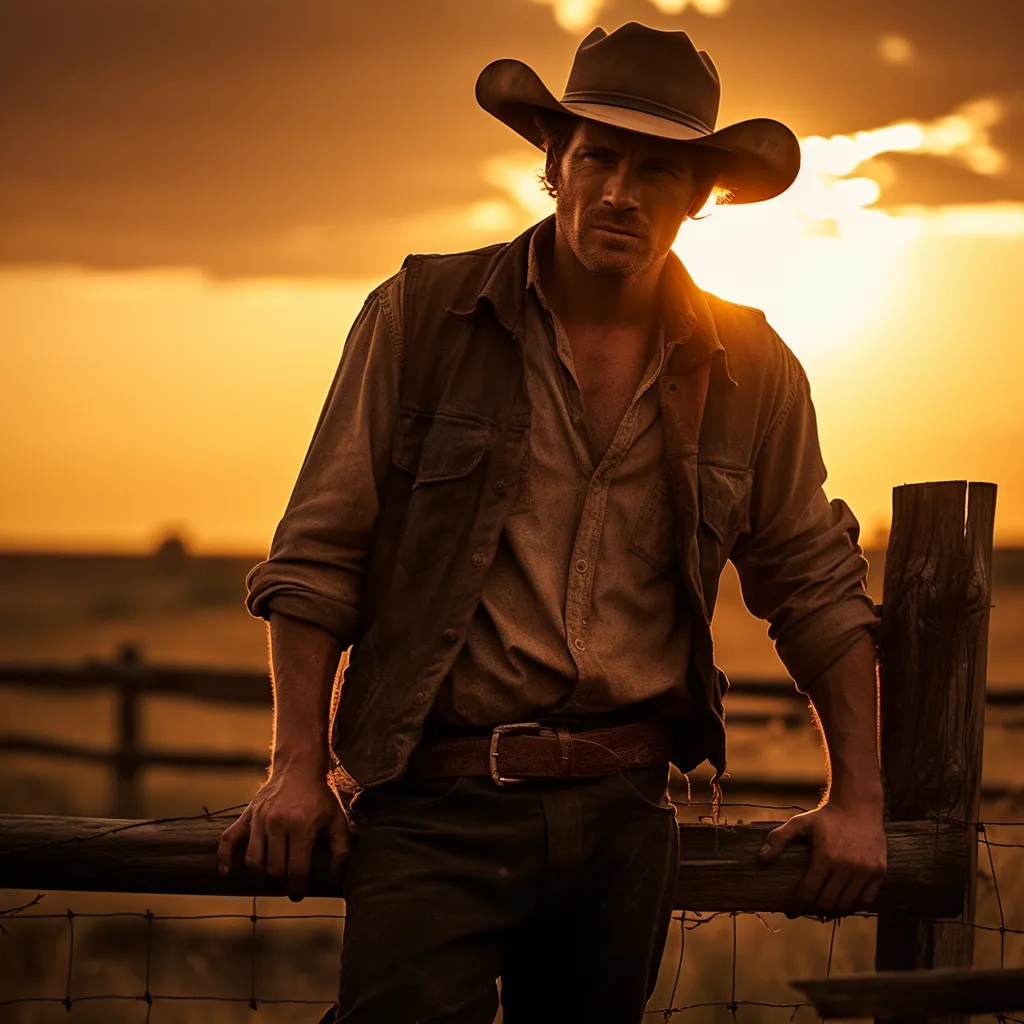
Why Do Cowboys Tuck in Their Shirts?
Have you ever wondered why that iconic cowboy image often features a neatly tucked-in shirt? It wasn’t just for show or mere style; there was logic and reason behind it. First and foremost, safety was a primary concern.
The rugged life of a cowboy involved being around heavy machinery, barbed fences, and various other elements where an untucked shirt could spell disaster. Imagine the risk of a loose shirt getting snagged or caught – it wasn’t just inconvenient but downright dangerous.
Beyond safety, comfort played a significant role. Spend a day on horseback, and you’ll quickly realize how an untucked shirt flapping can become an annoyance. It could bunch up, chafe the skin, and create unwelcome distractions.
Also read: What Do Cowboys Wear Around Their Necks?
A tucked-in shirt made those long rides a tad more bearable, ensuring nothing got in the way of a cowboy and his duties.
Lastly, let’s remember the impression a neatly tucked-in shirt makes. Cowboys, while rugged and tough, also had business to attend to. Whether bartering over cattle prices, liaising with fellow ranchers, or attending community events, looking sharp and professional mattered.
A tucked-in shirt subtly communicated respect, reliability, and a sense of pride in one’s appearance. So, the next time you picture a cowboy, remember that every fold, tuck, and style choice tells a deeper story of life in the Wild West!
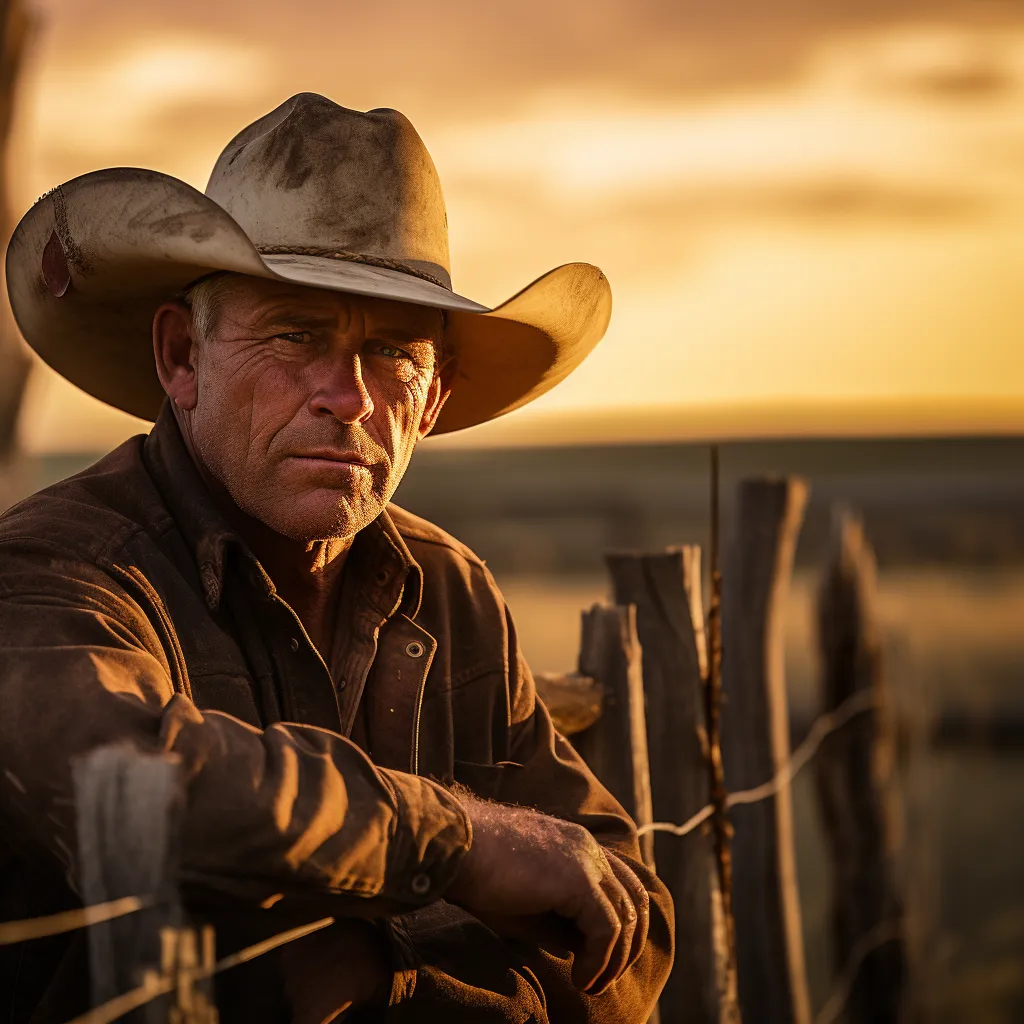
Different Types of Cowboy Shirts:
Many might think of a single, iconic design when one mentions cowboy shirts. However, delve a bit deeper, and you’ll find diverse styles, each reflecting its unique function and flair. Let’s unpack a few of the classic varieties.
First up, we have the Pearl Snap Shirts. This stylish staple stands out thanks to its distinct pearl snaps that replace the typical buttons. Usually crafted from denim or chambray, these shirts look sharp and are durable, ideally suited for the demands of cowboy life.
Then there’s the Western Shirt. At first glance, it might look similar to the pearl snap variety, but a closer inspection reveals its signature features. These shirts often boast intricate yoke details, handy pockets, and sometimes even elaborate embroidery, elevating them to something of a fashion statement within the cowboy community.
And for those chilly days out on the ranch or around the campfire, the Flannel Shirt becomes the go-to choice. Made from a warm, soft-brushed fabric, these shirts provide the comfort and warmth essential for cooler climates.
So, the next time you spot someone sporting a cowboy shirt, take a moment to appreciate the diversity and history embedded in every stitch and seam. From functional to fashionable, cowboy shirts genuinely encapsulate the spirit of the West!
Also read: Can you wear slim fit jeans with cowboy boots?
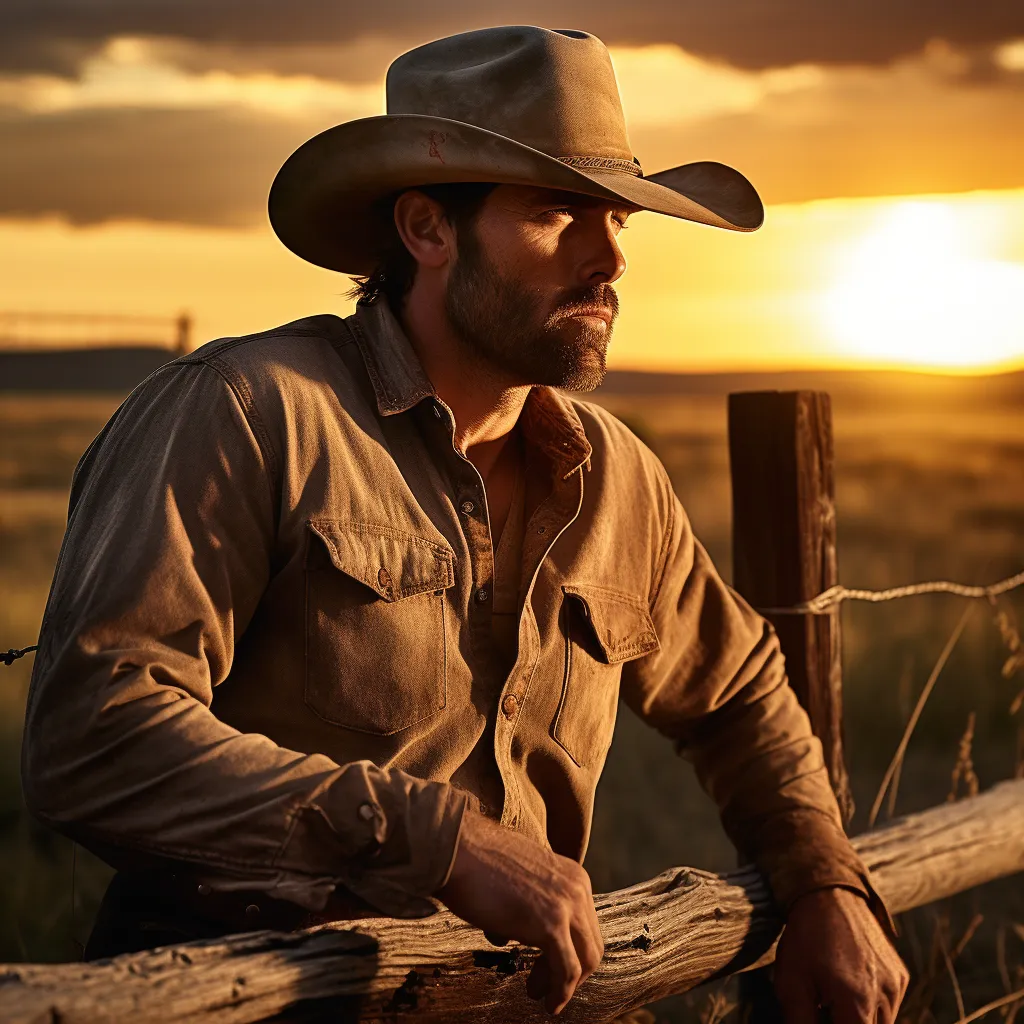
How to Tuck in a Cowboy Shirt:
Ah, the art of tucking in a cowboy shirt! While it might seem like a simple task, there’s a specific technique to it that ensures both comfort and style. Ready to master the tuck? Here’s how:
First, let’s talk fit. Your cowboy shirt should be just right—not too baggy or snug. A well-fitted shirt is flattering and tucks in seamlessly without any bulging or discomfort.
Next, stand tall and proud! Straighten up and smoothen your shirt, ensuring it’s free from crinkles or wrinkles. This sets the perfect canvas for a neat tuck.
Start with the front. Tuck the middle part of the shirt into your trusty jeans, and then gradually make your way to the sides. It’s like spreading a sheet on a bed; you want to ensure an even tuck without any puckering.
Now, on to the back. Like the front, ensure it’s tucked neatly and evenly on both sides. No one likes a lopsided look!
Lastly, it’s belt time. Adjust it to sit snugly on your hips. It should be comfortable—tight enough to hold everything in place but loose enough to let you breathe and move freely.
And there you have it! With these steps, you’re set to rock that classic cowboy look with poise and confidence. Happy tucking!
Do Cowboys Still Tuck in Their Shirts Today?
The image of a cowboy is iconic, but like all things, it has evolved with time. Today, if you venture out to a ranch or a rodeo, you’ll likely find a mix of tucked and untucked shirts. So, what’s the deal? Why the variation?
Well, climate plays a significant role. Cowboys working under the blazing sun might opt for an untucked shirt, letting the fabric breathe and offering more ventilation. It’s a simple way to keep cool when the mercury rises.
Job duties also come into the picture. A cowboy taking on high-adrenaline tasks like riding bulls or broncs would likely tuck in his shirt. This isn’t just for looks; it’s a safety measure to ensure their shirts don’t get entangled in any rigging, which could be catastrophic during a ride.
Reflecting on the period provides another layer to the story. Cowboys of yesteryears tended to tuck in their shirts, adhering to a more traditional appearance. While the ethos of the cowboy remains, their style choices have adapted to the changing times.
But above all, personal preference reigns supreme. Today’s cowboy has a world of choices at his fingertips. Tucked, untucked, partially folded – it all boils down to what feels suitable for the individual.
While traditions have their place, the modern cowboy embraces both the past and the present, making style choices that suit their environment, job, and, most importantly, their flair. Whether it’s a neat tuck or a breezy, untucked look, each cowboy tells his story through his attire.
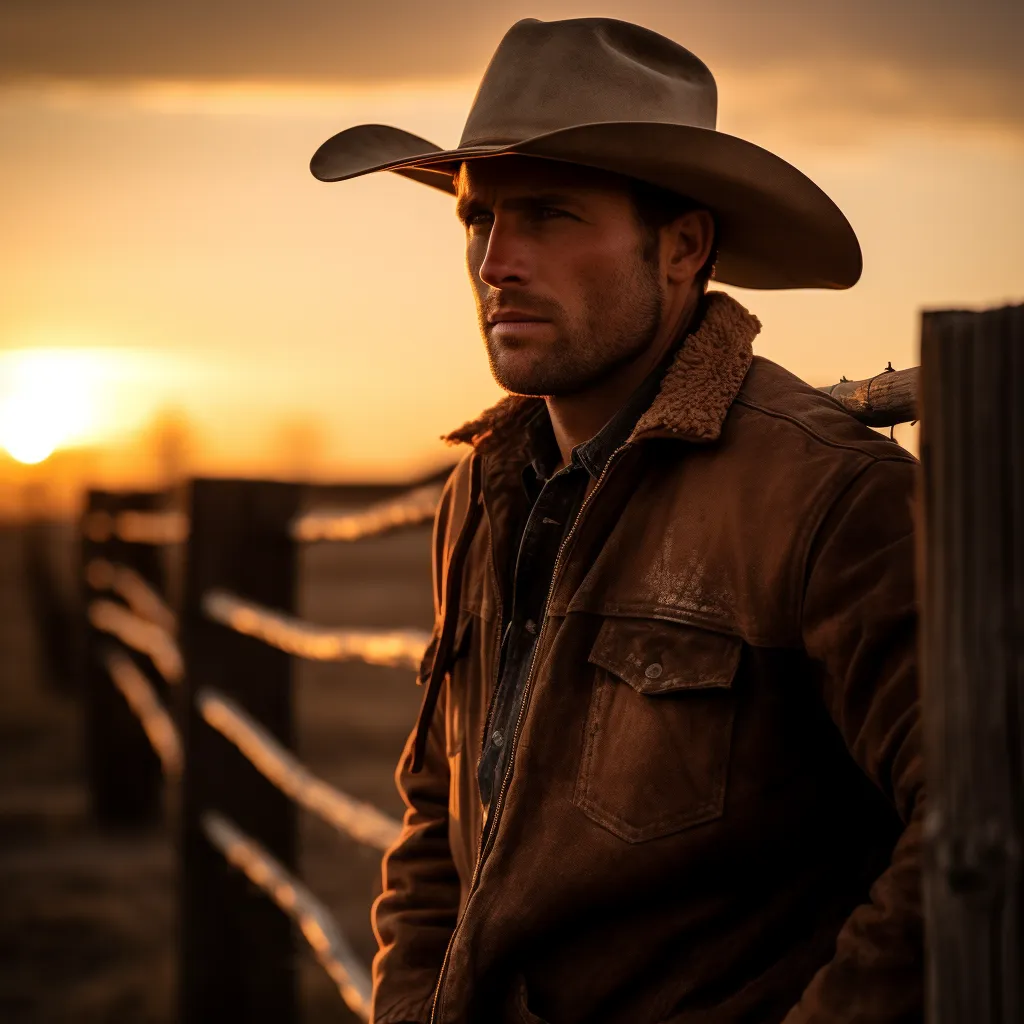
Conclusion:
From the dusty trails of the American West to the bustling rodeos of Today, the image of a cowboy and his shirt has always been symbolic. This simple yet meaningful act of tucking in their shirts is steeped in history, a gesture that speaks volumes about the cowboy way of life.
Whether for comfort on those long rides, ensuring cleanliness after a day of hard work, prioritizing safety amidst potential hazards, or simply wanting to look their best for an evening out, the reasons behind this tradition are as diverse as the cowboys themselves.
Cowboys, with their indomitable spirit, have always been about more than just rugged charm and resilience. The way they wear their shirts – tucked or untucked – is a testament to their adaptability and deep respect for form and function.
Be it during the grind of their daily duties, the thrill of a competition, or the camaraderie of social gatherings; their attire subtly narrates tales of their challenges, triumphs, and personal choices.
So, the next time you spot a cowboy and notice his shirt – whether neatly tucked into his jeans or flowing free in the wind – take a moment to appreciate the story it tells. It’s more than just fabric; it’s a narrative of tradition, practicality, and individuality.
Through the simple act of tucking in a shirt, we get a window into the cowboy’s soul and the Wild West’s timeless legacy.
FAQs
Why did the tradition of tucking in shirts start among cowboys?
The tradition began primarily for practical reasons. Cowboys led active lives, and a tucked-in shirt reduced the risk of it getting caught in machinery, snagged on vegetation, or flapping uncontrollably while riding. Moreover, it appeared neater, crucial for maintaining professionalism during business transactions or social interactions.
Do modern cowboys have different attire preferences than those from the past?
Yes, while the core principles of cowboy attire remain rooted in functionality, modern cowboys have more flexibility in fashion and personal expression. Today, choices about tucking in shirts can be influenced by current fashion trends, personal comfort, or specific events rather than traditional norms.
Does the type of shirt (like flannel, denim, or chambray) influence the decision to tuck it in?
While the type of shirt can play a role in the decision, the primary factors remain functionality and personal preference. However, heavier fabrics like flannel might be more likely to be tucked in during colder months for added warmth, while lighter shirts might be left untucked in warmer conditions for better ventilation.
Are there formal events or rodeo competitions where it’s mandatory for cowboys to tuck in their shirts?
While not necessarily “mandatory,” certain formal events, rodeo competitions, or ceremonial occasions might have dress codes that require participants to present themselves in a more traditional and polished manner, which could include having their shirts tucked in.
Is the cowboy tuck limited to the American West, or is it seen in cowboy cultures worldwide?
Tucking in shirts is widespread and not exclusive to the American West. Cowboys and cattle herders from various parts of the world, whether they’re called “gauchos” in South America or “stockmen” in Australia, have their unique attire traditions. However, the reasons behind their choices, be it for safety, comfort, or style, are often universally understood and shared.

